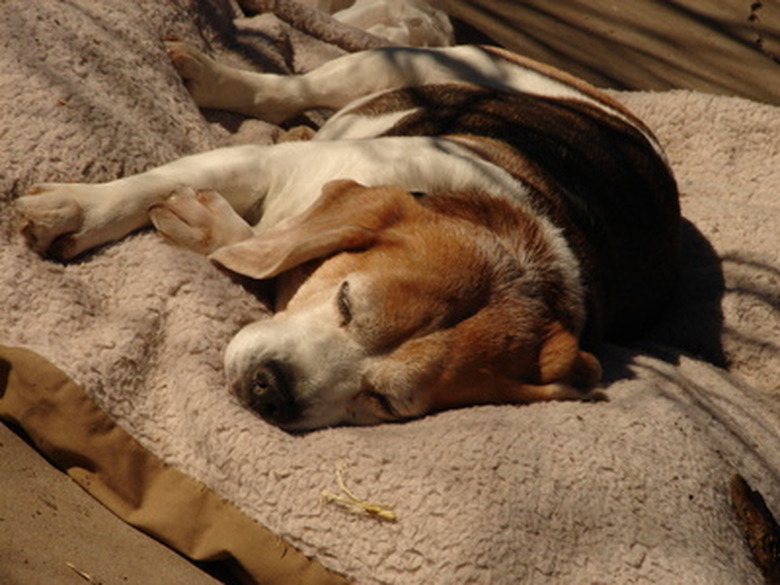Prednisone Treatment For Mast Cell Tumors In Older Dogs
Mast cell tumors can be found anywhere on a dog's body, but are usually in the skin's superficial layers. While the tumors are usually found on their own as single tumors, it is possible for the dog to have more than one tumor. There are several treatment options available for these tumors, including a drug called prednisone. Work closely with your veterinarian in order to treat this condition and to give your dog the best prognosis possible.
Mast Cell Tumors
Mast Cell Tumors
This type of tumor is quite common in dogs. According to Holly Nash, DVM, DS, of the Veterinary Services Department of Doctors Foster and Smith, mast cell tumors make up about 20 percent of all canine skin tumor cases. Veterinarians can diagnose mast cell tumors by inserting a needle into the tumor and using a microscope to examine the cells. Drugs (such as prednisone), surgery and radiation therapy can all be used to treat the tumors. Mast cell tumors are cancerous.
Older Dogs
Older Dogs
Mast cell tumors are much more likely to occur in older dogs. While these tumors can occur in a dog of any age, most cases occur in older dogs that are between 8.5 and 9.5 years old.
Prednisone
Prednisone
Prednisone is a glucocorticoid, which is a type of steroid. It works as an anti-inflammatory and immune system suppressant. Prednisone is available in several forms, including tablets, syrups and injections. It is only available by prescription.
Prednisone Treatment
Prednisone Treatment
While prednisone cannot kill the mast cells, it is a steroid and is used to shrink the size of the tumors and bring down the inflammation. Unfortunately, the results are usually only seen for about one to two months. When mast cells are stimulated, they release histamines that can cause hives and other symptoms of allergies. Prednisone is often used to treat allergies, due to its anti-inflammatory properties, which makes it a good drug to treat the side effects of mast cell tumors.
Side Effects
Side Effects
Prednisone has many possible side effects. Discuss any concerns you have with your veterinarian. Some side effects include an increase in thirst and appetite, panting, restlessness, vomiting or diarrhea, weight gain and infections of the skin or bladder. It may also interact with some medications, such as non-steroidal anti-inflammatory drugs.
Dosage
Dosage
To treat mast cell tumors, prednisone is usually used for at least six months. The dog may be weaned off the drug at that time if there are no new tumors present. Discuss the proper dosage with your veterinarian, as its dose depends on many factors, such the dog's weight, the condition being treated and how the dog is responding to the medication. Prednisone dosage for dogs can range from 0.1 to 3 mg per pound. Follow your veterinarian's directions carefully. It is usually necessary to slowly wean the dog from this medication, so do not stop prednisone therapy suddenly unless instructed by your veterinarian.
Always check with your veterinarian before changing your pet's diet, medication, or physical activity routines. This information is not a substitute for a vet's opinion.
